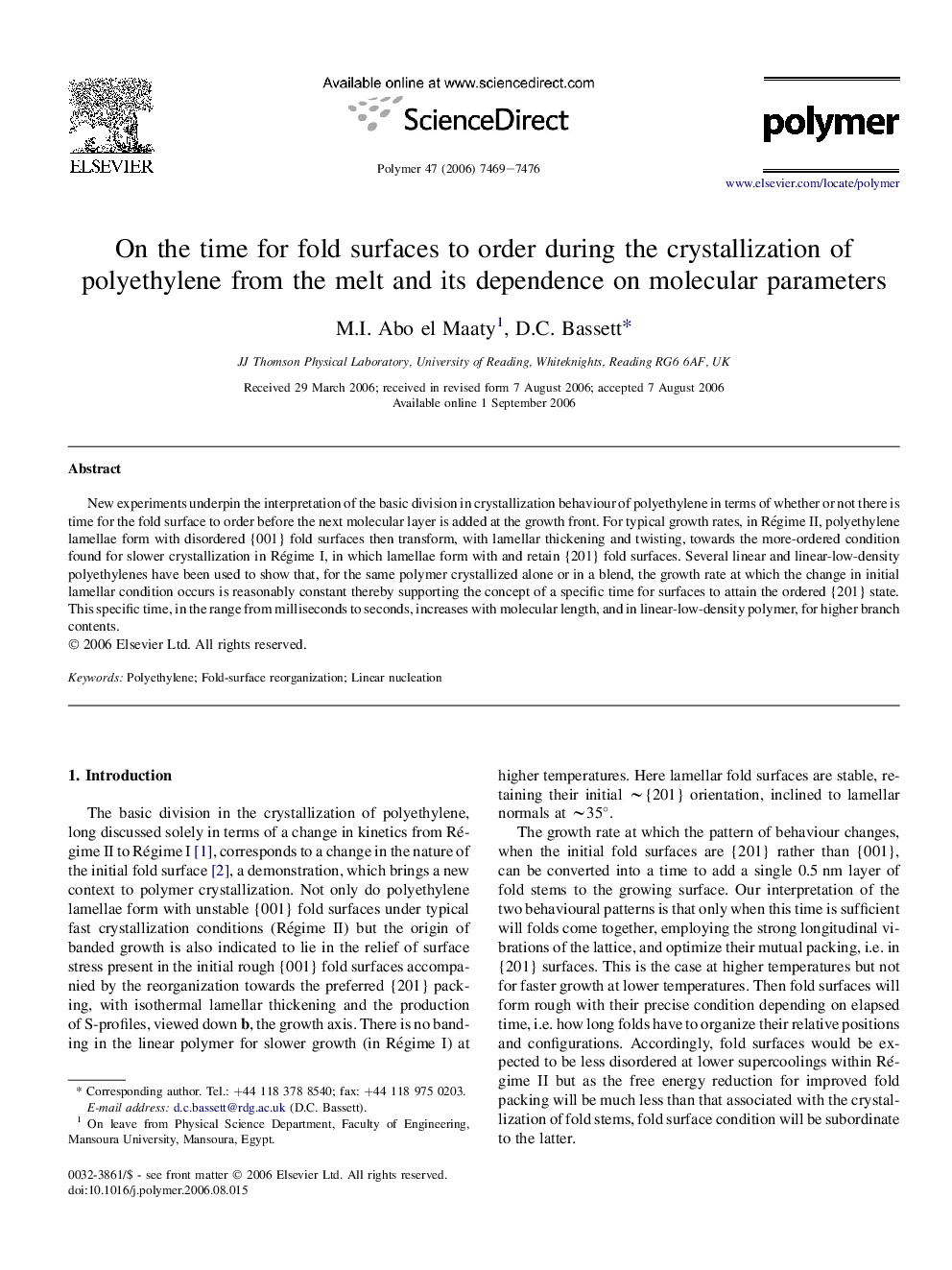| Article ID | Journal | Published Year | Pages | File Type |
|---|---|---|---|---|
| 5188803 | Polymer | 2006 | 8 Pages |
Abstract
New experiments underpin the interpretation of the basic division in crystallization behaviour of polyethylene in terms of whether or not there is time for the fold surface to order before the next molecular layer is added at the growth front. For typical growth rates, in Régime II, polyethylene lamellae form with disordered {001} fold surfaces then transform, with lamellar thickening and twisting, towards the more-ordered condition found for slower crystallization in Régime I, in which lamellae form with and retain {201} fold surfaces. Several linear and linear-low-density polyethylenes have been used to show that, for the same polymer crystallized alone or in a blend, the growth rate at which the change in initial lamellar condition occurs is reasonably constant thereby supporting the concept of a specific time for surfaces to attain the ordered {201} state. This specific time, in the range from milliseconds to seconds, increases with molecular length, and in linear-low-density polymer, for higher branch contents.
Keywords
Related Topics
Physical Sciences and Engineering
Chemistry
Organic Chemistry
Authors
M.I. Abo el Maaty, D.C. Bassett,
